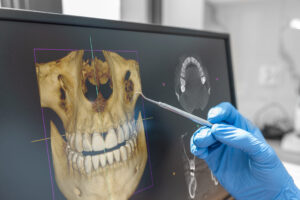How digital dentistry has revolutionized the dental practice

How digital dentistry has revolutionized the dental practice
The recent explosion of digital technology including advanced software, scanning, designing, and manufacturing capabilities has led to a revolution in dentistry known as the “Digital Dentistry” facilitating the innovation of new treatment protocols. Biomechanical engineering combined with the new advances in computer science resulted in the evolution of the art and science of digital dentistry.
Digital dentistry is becoming rapidly integrated into the daily modern clinical practice. Digital dentistry includes different aspects such as the digital impression, Cone Beam Computed Tomography (CBCT) scanning, Computer Aided Design and Manufacturing (CAD/CAM) restorations, three dimensional printing(3DP), computer generated surgical guides and surgical navigation, digitally fabricated dentures on a virtual patient, shade matching, digital photography and virtual orthodontic treatment simulation and more.
Digital X-ray: The cornerstone of digital dentistry is the shift from traditional X-rays and physical impressions to digital scans. Intraoral scanners, resembling slender wands, take 3D digital impressions of your teeth and gums. This not only eliminates the discomfort of traditional methods but also provides a wealth of information. Dentists can now view your oral cavity from any angle, zoom in on specific areas, and even manipulate the image for a more comprehensive evaluation.
The impact of digital dentistry goes far beyond efficiency and comfort. Digital X-rays, with lower radiation compared to traditional methods, provide a clearer picture of your oral health. Dentists can use specialized software to analyze these images, leading to earlier detection of cavities, gum disease, and even potential oral cancers.
Digital scans: Digital scans usher in an era of unparalleled precision in dentistry. These highly accurate 3D models are used to design custom-made dental restorations, ensuring a perfect fit for crowns, bridges, dentures, and even implants. This translates to fewer adjustments during procedures, reduced risk of complications, and restorations that feel and function more naturally.
The digital workflow streamlines the entire dental process. Gone are the days of waiting weeks for impressions to be shipped off to a lab and restorations to be fabricated. Digital scans can be sent electronically, allowing for quicker turnaround times and potentially even same-day dentistry for certain procedures.
Treatment Planning with Foresight: 3D scans are a game-changer for treatment planning. Dentists can virtually manipulate the digital model to plan complex procedures like implant placement or complex surgeries. This allows for meticulous planning, ensuring optimal positioning and minimizing the risk of errors for a more predictable outcome.
The Future of Smiles is Digital: Digital dentistry is a rapidly evolving field with exciting possibilities on the horizon. Artificial intelligence (AI) is poised to play a bigger role, analyzing scans, identifying potential issues, and even suggesting treatment options. Additionally, 3D printing advancements could lead to the creation of not just customized restorations but also biocompatible materials for tissue regeneration and even personalized surgical instruments.
Digital dentistry signifies a paradigm shift in dental care, offering a more comfortable, efficient, and precise experience for patients. With its focus on improved diagnostics, meticulous planning, and predictable outcomes, digital dentistry is revolutionizing smiles and paving the way for a future of better oral health for all.




